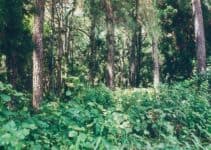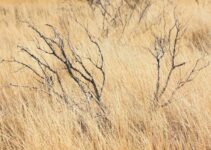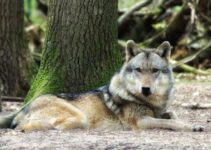Desert biomes are incredibly interesting to look at. They cover about 20% of the Earth and occur where rainfall is less than 50 cm/year. There are mainly four types of deserts in this biome – hot and dry, semiarid, coastal, and cold. These ecosystems are identified by the fact that they don’t get a lot of precipitation during the year. Only those plants and animals that are able to adapt to the climate and temperature of desert can survive there. Deserts that receive rain as the main form of precipitation are called as hot deserts while those which receive snow as their main form of precipitation are called as cold deserts. Here are some quick and interesting facts about desert biomes.
- About 1/5th of the world is covered in deserts.
- The only continent that does not have a desert is Europe.
- Most desert biomes are hot in the day, and cold at night. The exception is the cold desert, which we will take a closer look at below.
- The Sahara desert in North Africa is the largest desert in the desert biome as it covers over 300 million square miles.
- Not many living organisms, plant or animal, can reside in deserts.
- There are few large mammals in the desert biome as most of them are not capable of storing enough water and the vegetation does not grow very tall. So, you can see small animals, rodents and reptiles as they can escape the heat of the sun by hiding themselves under small scrubs.
- Many of the desert animals tend to be nocturnal. They sleep during the day when the temperature is high and come out at night when it is a little cooler.
- Many people enjoy visiting deserts, and many deserts have some sort of human population.
- The animals and plants that live in the desert adapt to what they need – for example, animals store fat in one spot, cacti are covered with hard wax to prevent water leaving them.
- There are four major types of desert biomes, which we’re going to explore in the next section of this article.
The desert is natural; when you are out there, you can get in tune with your environment, something you lose when you live in the city.
– Robyn Davidson
4 Major Types of Deserts
As mentioned above, there are four major types of deserts that you may come across when it comes to desert biomes. Here is a quick look at each of them.
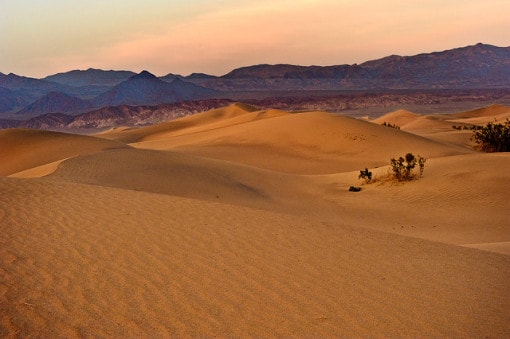
Hot and Dry Desert
Hot and dry deserts are the stereotypical deserts that many of us think about when we’re talking about the word “desert.” Here are some of the main traits that you will notice when you’re exploring a hot and dry desert.
- There are multiple hot and dry deserts all over the world; four in North America (Chihuahuan, Sonoran, Mojave and Great Basin), and various others located throughout the world.
- Summers are unbearably hot; temperatures are warm throughout the rest of the year.
- There is little to no rainfall during the summer months in a hot and dry desert climate.
- Winters come and there is very little precipitation at all, but that is usually when it occurs.
- Average temperature during the day is 23 degrees Celsius; it can get as hot as 49 degrees Celsius.
- Plant life is rare in hot and dry deserts; mostly small trees and shrubs.
- Animals of all types live throughout the region (insects, mammals, arachnids, birds, reptiles).
- Carnivorous animals are common due to the lack of plant life in the hot and dry desert. They mostly stay inactive in protected hideaways during day when it is too hot and come out at night when it is a little cooler.
- Soil is very rocky, coarse, and/or filled with gravel. Because of this, water drains incredibly well and won’t stick around below the surface.
Semiarid Desert
Semiarid deserts are those that we think of in the northwestern part of the United States. There are others located throughout North America, Northern Europe, and Northern Asia. The major types of semiarid desert include the sagebrush of Utah, Montana and Great Basin.
- Semiarid deserts are only located in the Northern hemisphere due to their unique setup and the temperatures that they maintain throughout the year.
- Summer temperatures average about 23 degrees Celsius, but it never gets warmer than 38 degrees Celsius (much cooler than hot and dry deserts). In the evening, the temperatures are cool, at around 10° C.
- There is little to no rainfall during the summer months, with spots of precipitation during the winter. The annual rainfall ranges from 2-4 cm annually.
- Soil is shallow, sandy, and fine, especially when compared with the hot and dry deserts that we discussed above.
- Plants in semiarid areas often taste badly and have spikes or hairs that make them difficult to touch or even go near. This is to prevent animals and people from going near them and causing them to lose their grip (their roots are too shallow to have a solid grip).
- Mammals, small birds, reptiles, and insects reside in the area. Animals are both diurnal and nocturnal, and use the shade of the plants to be able to function during the daylight hours.
Coastal Desert
Coastal deserts are one of the most unique deserts that you will find when you’re looking. These deserts can be found in cools to warm areas such as the Nearctic and Neotropical realm. They aren’t very common; the most well known is the Atacama, which is located in South America.
- Summers are warm, with temperatures rarely going above 20 degrees Celsius. The mean temperature in summers ranges from 13-24° C.
- Winters are cool, with temperatures between -3 and 6 degrees Celsius; on occasion, it will dip down to -4 or -5 (C).
- Coastal deserts get more rain than their semiarid and hot and dry cousins; they can get up to 12 or more centimeters every single year.
- Like semi-arid deserts, the coastal desert ends up being incredibly fine.
- The plant life in coastal deserts thrives a bit more due to the amount of rain that the areas get. Their roots go deeper as to ensure that they get all of the water that comes when it rains.
- However, most of the plants that are in the coastal desert are also shrubs and bushes, with some grasses.
- Raptors, reptiles, insects, and mammals are all common in coastal deserts due to the more desirable conditions. Like the semiarid deserts, there are diurnal and nocturnal animals that reside there.
- Amphibians can actually live in coastal deserts, but the ones that reside in them have special adaptations that help them to adapt to living in an area that goes through dry spells as severe as the coastal areas do.
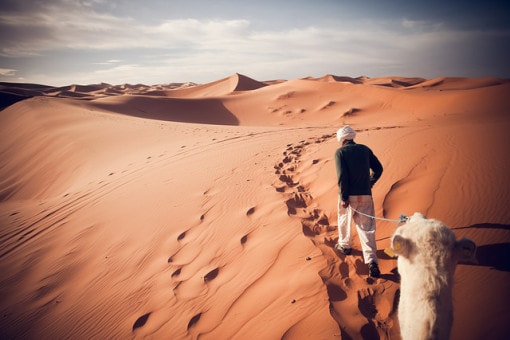
Cold Desert
Cold deserts are also incredibly unique when compared to all of the other types of deserts that we’ve looked at here. They occur in the Antarctic, Greenland and the Nearctic realm. The mean temperature in summers ranges from 21 to 26 ° C and mean winter temperature is between -2 to 4° C. The cold deserts are known to receive snow during the winter and high overall rainfall throughout the winter that averages out to 15 – 26 cm a year. Here are a few quick facts to give you a better idea as to what cold deserts are like.
- Cold deserts have incredibly cold winters, which can get anywhere from -2 to 4 degrees Celsius.
- Contrary to their name, cold deserts still have summers, with temperatures rarely going above 20 degrees Celsius.
- Snowfall is immense, especially when compared with the other types of deserts which get next to no rainfall. The average is usually around 15 to 20 centimeters of precipitation throughout the winter months.
- The most precipitation ever recorded in a cold desert in a year was over 45 centimeters, which is what some other types of deserts get over several years’ time.
- Because of the landscape, the soil is incredibly heavy and has lots of pores so that it can take in every bit of water that it can.
- The heaviest precipitation is either in the late spring or the early fall, depending on where the cold desert is located.
- Plants are not common in the cold desert, but the ones that are there are spiny deciduous plants, along with some mosses and fungi.
- Animals that reside in the cold desert are mostly mammals, due to the fact that the winters get cold. Other animals would likely die if they tried to live there. Many of these mammals are burrowers who live underground and hibernate for at least part of the winter months.
- If there are lizards (which happens in some of the relatively warmer cold deserts), they are burrowers that end up hibernating when the cold months of winter come around.
Desert biomes are a huge part of the world that we live in, so it’s important that we take the time to better understand and explore them. Even if areas don’t seem to fit our definition of a “desert,” it’s still important for us to embrace them and do what we can to protect them as part of our planet.
References


